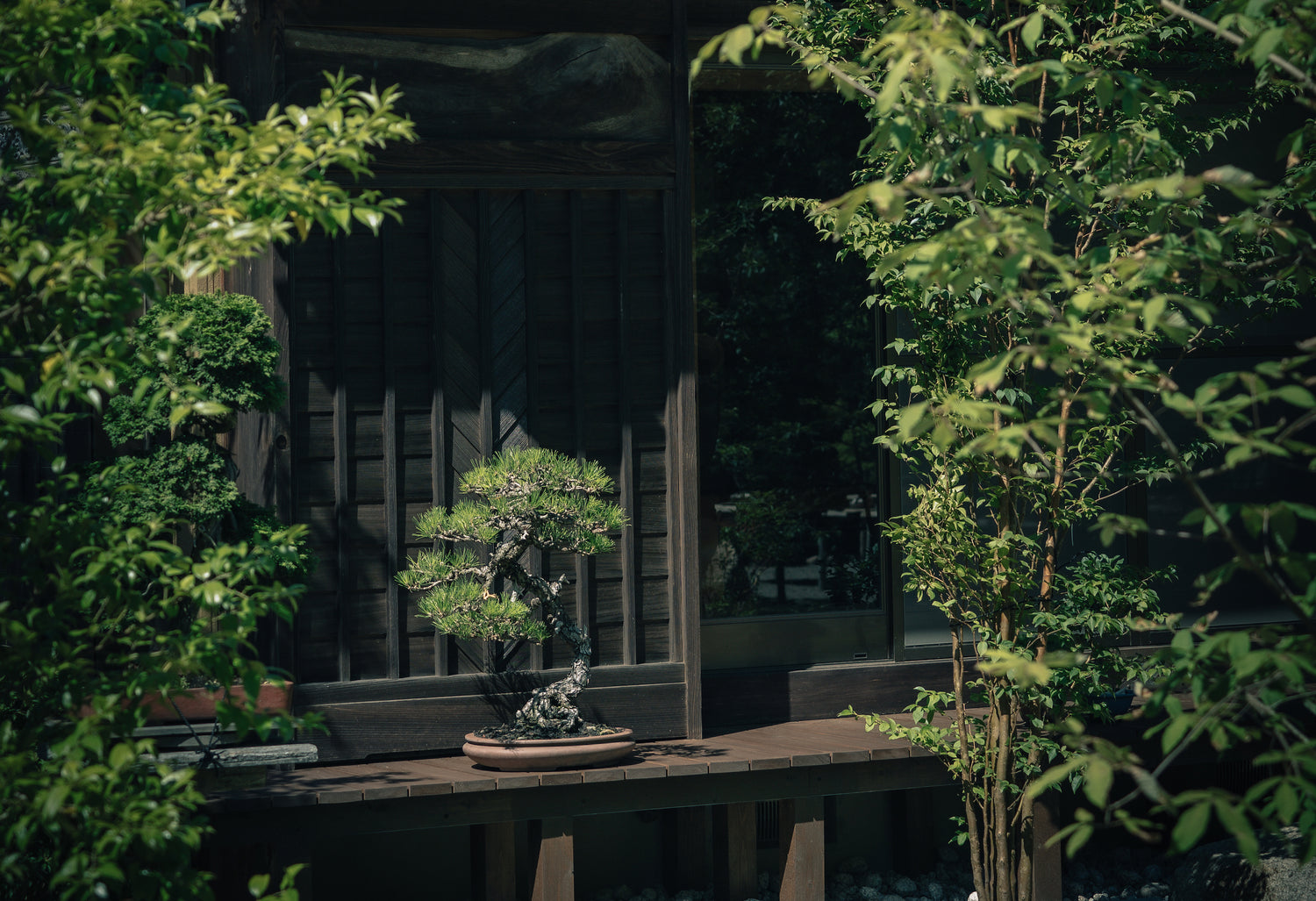
Take a step back first and appreciate the display in its entirety. We have here a great specimen of flowering ume. The usual setup for Omono: a main tree on a stand with an accent plant on the side, which in this case is a grass on a simple wooden jita. The overall feeling is of a natural prairie. An old tree up on a hill surrounded by an open land of grass allowing the white flower to strike the viewer against the darker bark of the aged trunk.
Consider the stand.

The stand, moving from the feet upward, it's curved feet and rounded edges bring softness to the landscape, while the attentive viewer will discover engraved on the legs, a vine pattern, its crisp and textured allusion to the bark, telling us a story of the long relationship the tree is sharing with it's environment. Just above the vine, the airy cutouts of the indented gallery below the top plate of the stand remind us of the canopy where we will see a play between branches and negative space between them. The upper plate is of a very elegant flower shape that of course corresponds to the ume's beautiful flowers.

The round fluted pot.
Cream in color, connects perfectly with the white flowers having a tint of yellow from the stamen, and the contrast of the red wood of the stand is well chosen to highlight the beautiful green moss sitting just above, the blackish bark and flowers.

Amazing detail to notice: the rope center band and lip accents on the pot, draw the viewer’s attention to the relationship between the texture or the vine carving on the stand and the texture of the bark of the tree. The overall shape of the standwith its indented gallery and flared top plate match nicely with the flared lip of the pot. The structure of the tree we will talk about below.
The tree

With an elevated nebari, emphasising allusion to the hill, and apparent roots with playful moss in between, the base of the tree is opposing the shape of the fluted pot. The moss, again, is not just present on the soil surface, lichens are growing up the tree in spots where nature decided to reclaim life.

The bark is a statement to the age of the tree, accentuated by the work on the lip of the pot and the darker color of the stand. The black is intense, almost burnt. It contrasts so beautifully with the flowers spreading well above it. The cranky shape of the trunk is continued to the tips by branches above and on the side, creating a balanced and profound volume and movement. 
The elegant downward trunk bends to the left to offer an open hand of flowers with an amazingly carved jin facing the viewer. Carved extensively as the stand with the vine pattern, it is a wonderful choice of pairing.

Everything in this display calls for multiple references which is really smartly and elegantly done. It is a play of back and forth with all elements of the composition. A wonderful assembly for the pleasure of viewers.
Each year, the exhibition showcases the finest examples of bonsai artistry, and we are already eagerly anticipating the 98th Kokufu exhibition in 2024. Join us for a tour at Tree House Bonsai on February 11th or February 14th during the next exhibition, details here.
***
Information and credits:
Place: Tokyo Metropolitan Art Museum
The tree belong to a private owner, it was displayed at the 97th Kokufu exhibition
Text and photography: Adam Jones, Tree House Bonsai


